katsuobushi
Katsuobushi: The Story of Amazing Bonito Flakes
Karina Ikedo
Posted on June 21, 2024
Share:
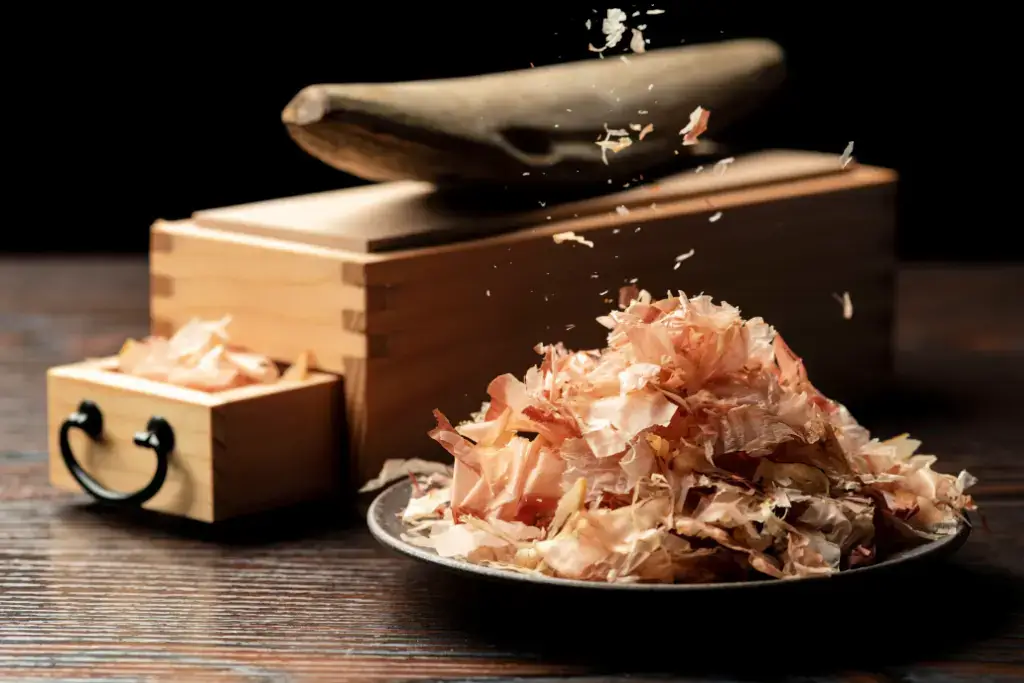
Japanese cuisine has a long list of seasonings and flavorful ingredients that are key to making their dishes delectable. Among these ingredients, katsuobushi (dried bonito flakes) is slowly becoming a hit outside Japan. But they smoke and dry bonito fish over several months and then shave it into flakes. While the reference to school supplies may not be the most appetizing, these flakes have a warm, smoky, umami flavor.
This unique Japanese ingredient adds flavor to multiple Japanese dishes, including a zesty rice topping. Learn about katsuobushi, where it’s from, and the delicious dishes that feature this one-of-a-kind ingredient.
What is katsuobushi?
Katsuobushi, or bonito flakes, are dried shavings of katsuo (skipjack tuna or bonito). They come from a tuna-like Pacific fish, which producers dry, ferment to wood-like hardness, and then smoke. These flakes have a smoky, savory taste that serves as a great accent for many Japanese dishes. Because dried bonito has a strong umami (savory) taste, it is perfect for making dashi (fish broth).
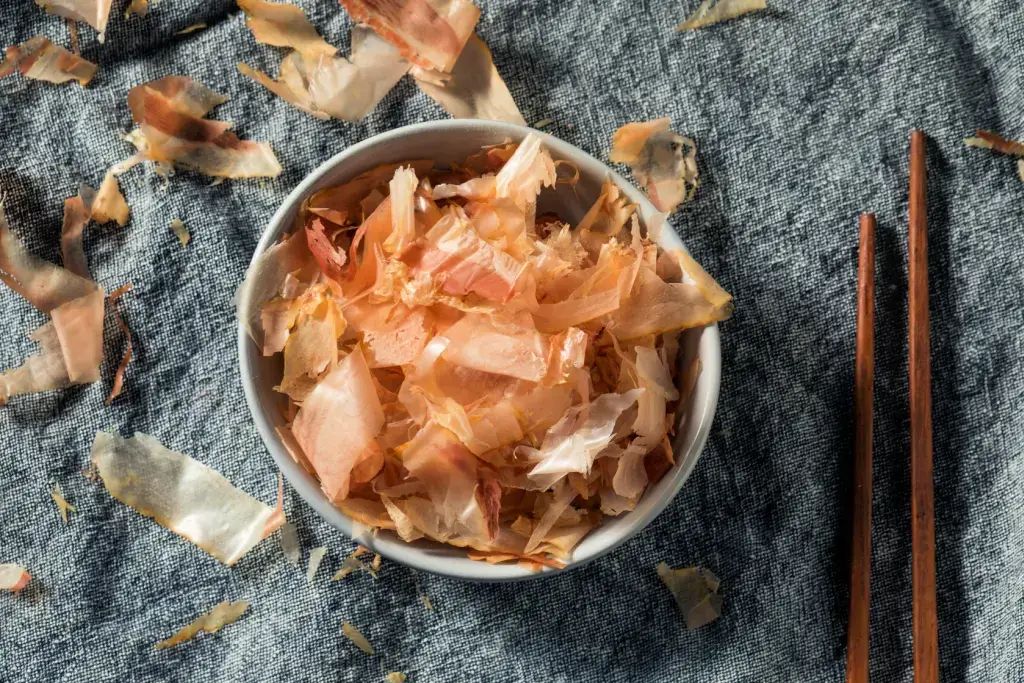
You can also use it as is, sprinkling it on simple vegetables to instantly give them a deeper flavor.
What’s more unique is the method of making bonito flakes. Producers must smoke the skipjack tuna fish for at least five to six hours in one session. Then, they let them rest for a day. They repeat the smoking and resting cycle 12 to 15 times!
Where is it from?
Katsuobushi has its roots entirely in Japan. One of the legends about its origins explains how one part of its production came to be. A katsuobushi dealer found some arabushi (dried skipjack tuna) growing mold in his warehouse and didn’t throw it away. He tried it and discovered that the mold only intensified its flavor!
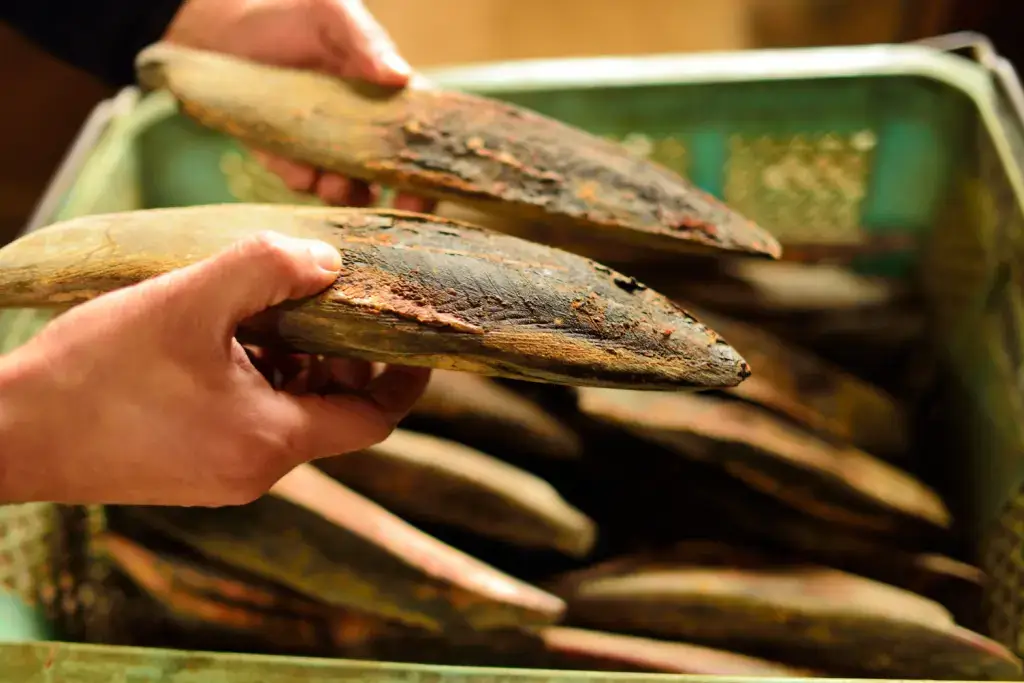
This type of bonito flakes was first produced in Makurazaki in Kagoshima Prefecture in the 1700s. The manual process requires knowledge of sophisticated fish-cutting skills and has been kept alive by dedicated artisans.
Looking for a taste of Japanese culture? Check out Sakuraco! Sakuraco is a subscription box delivering delicious traditional Japanese snacks and teas straight from Japan to your door, every month!
What dishes do people use katsuobushi for?
Okaka
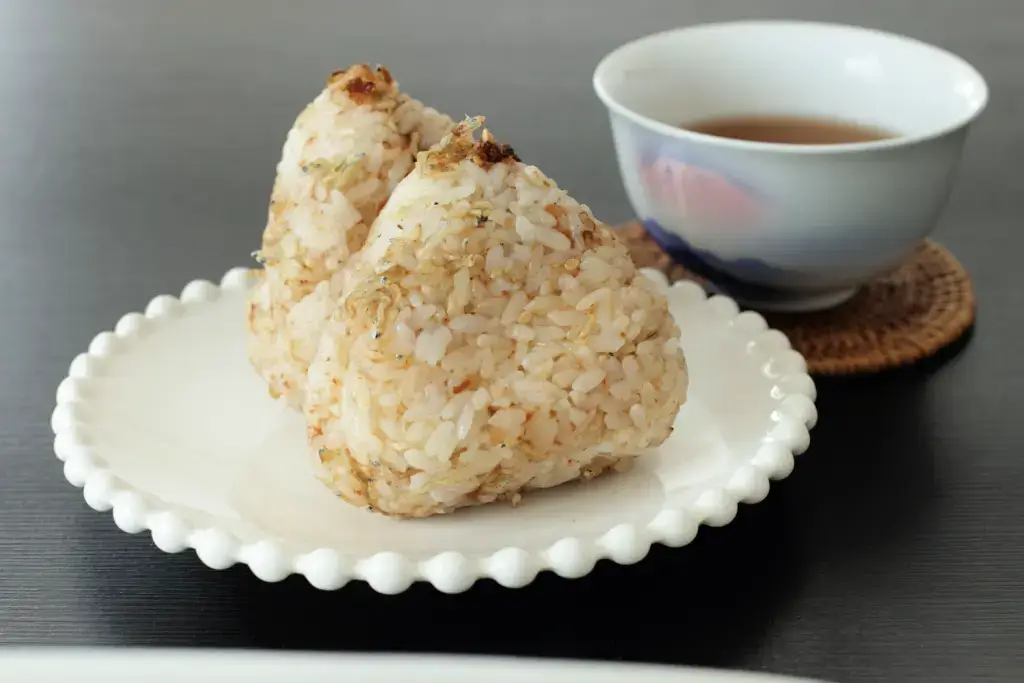
Okaka, or chopped bonito flakes mixed with soy sauce, is a popular onigiri (rice ball) filling and rice topping. The flavor can be as light or salty as you wish by simply adjusting the amount of Japanese soy sauce. The best thing about it is that it takes less than two minutes to make. It’s easy to make and perfect for a quick lunch or snack. Give it a try, and enjoy every bite of these delicious rice balls!
Takoyaki and Okonomiyaki
People also use katsuobushi as a topping for okonomiyaki (a savory Japanese pancake) and takoyaki (grilled octopus balls). They make takoyaki with chewy octopus and a light, airy batter, smother it in sauce, and top it with wiggling bonito flakes.
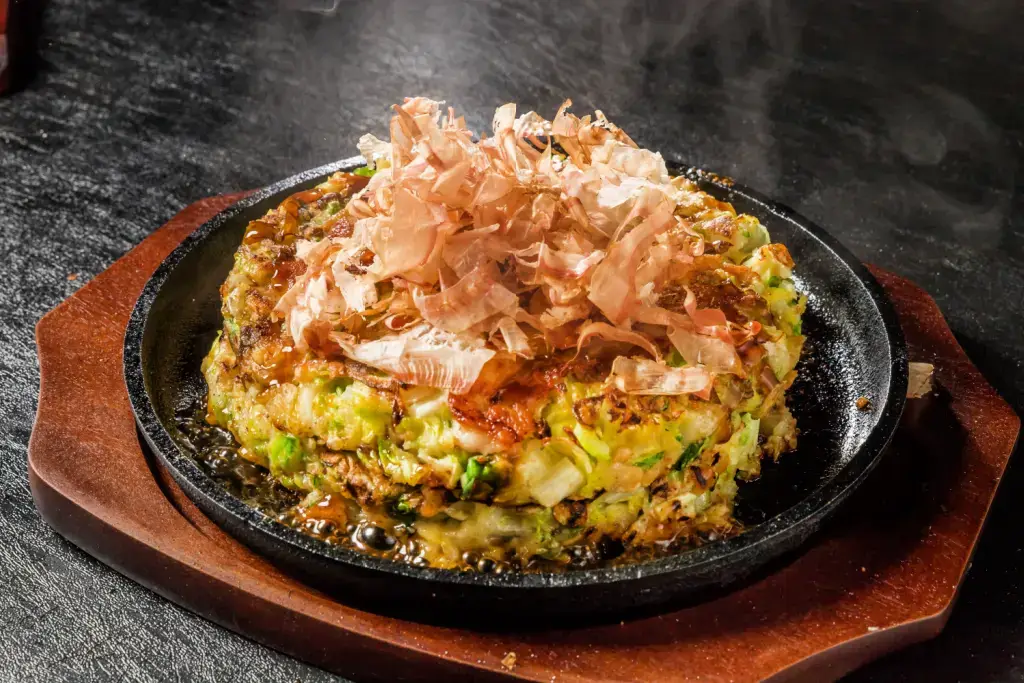
Meanwhile, okonomiyaki is a delicious, savory Japanese treat served in a pancake shape with various toppings and sauces. Adding a few katsuobushi flakes on top of your okonomiyaki gives it an umami flavor that greatly enhances the pancake. These flakes make your takoyaki and okonomiyaki look like they’re dancing! They are delicate, paper-thin, shaved dried fish that wave from the hot steam.
Ramen and Soba
You’ll be amazed to find different types of ramen and soba with this ingredient as a topping or the soup’s broth seasoning. It’s because any flavorful Japanese soup starts with dashi, made from a combination of katsuobushi and kombu (dried kelp).
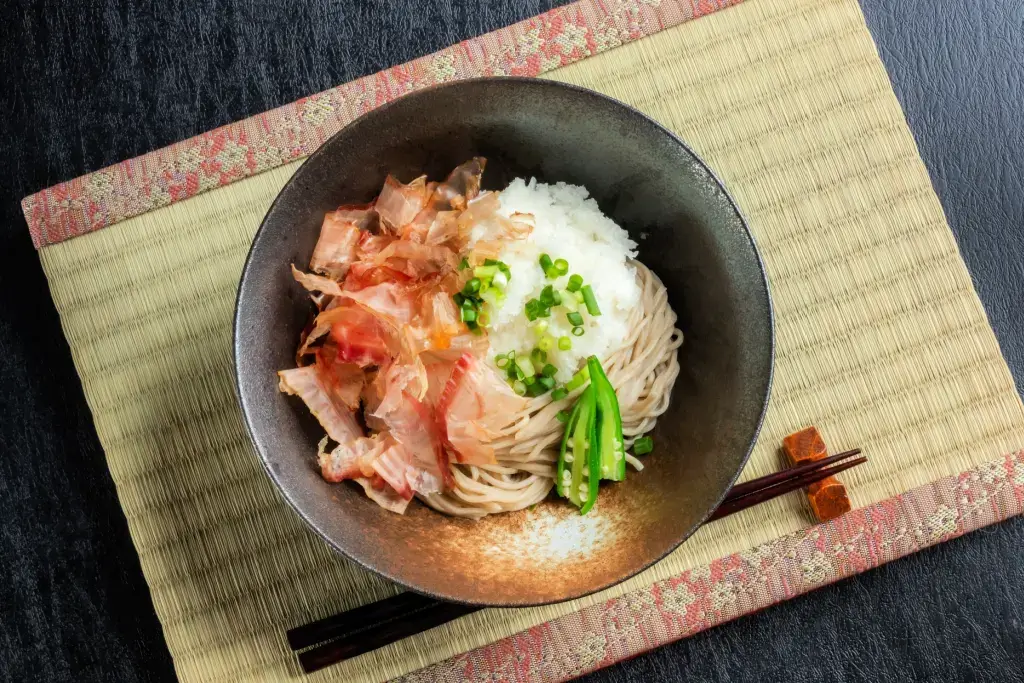
Sodium-rich, it magically lifts any dish and makes some of the best ramen noodles. Spoon a little over ramen for a beautiful yet flavorful comfort bowl. Shoyu (soy sauce) ramen uses bonito flakes as a base. Meanwhile, katsuo (bonito) ramen uses plenty of katsuobushi as a base and topping for a rich umami flavor and aroma.
Why should I try katsuobushi?
Katsuobushi is an essential ingredient in Japanese cuisine. People use bonito flakes to make stock and as a topping on everything from noodles to rice. Their intense umami flavor enhances any dish they are added to. Beyond their flavor, bonito flakes are packed with essential nutrients, making them a great staple in the pantry. It is also rich in protein, amino acids, and iron.
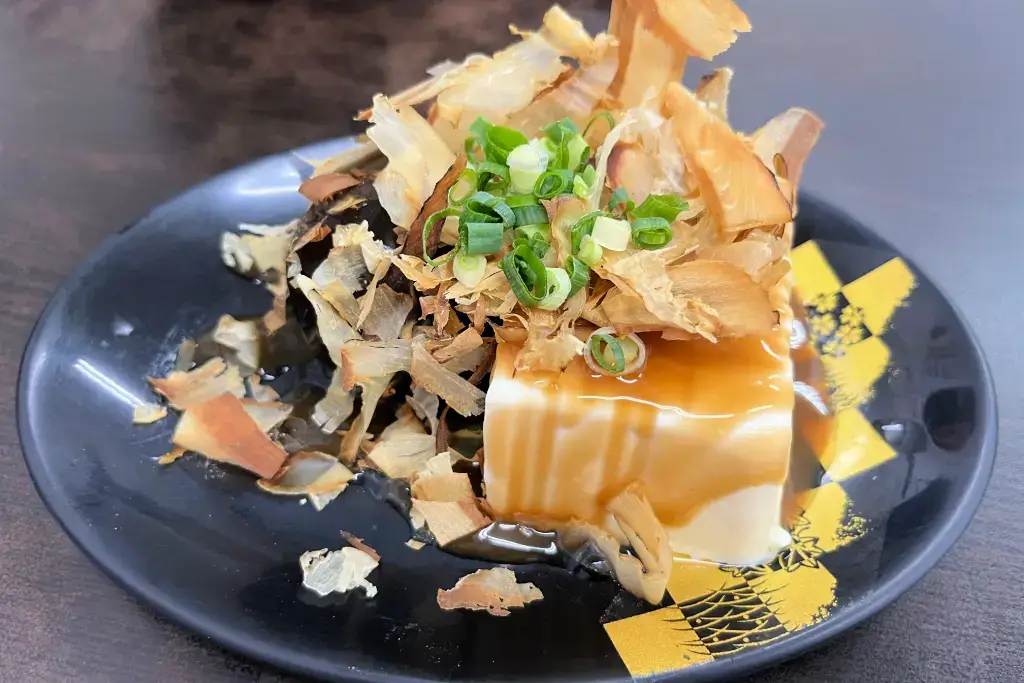
Regularly consuming this superfood may help improve brain function, lower blood pressure, and boost metabolism. It even promotes collagen production, giving you a firmer and more moisturized complexion. If you want to feel great and look good, katsuobushi might be your perfect ingredient! Have you tried katsuobushi before? Do you have a favorite dish featuring this one-of-a-kind ingredient? Let us know in the comments below!

Discover authentic flavors with Sakuraco
Get Sakuraco 

Discover authentic flavors with Sakuraco
Get Sakuraco 
Related Articles

Mochi: How is Mochitsuki Made in Japan?
Mochitsuki is the Japanese tradition of pounding steamed rice to make mochi for the New Year. Families and neighbors gather to participate in this lively and meaningful tradition. The teamwork involved helps everyone feel a sense of connection.

Konpeito Candy: What Makes This Starry Treat Shine?
If you are a fan of the famous Demon Slayer series, then you probably know that the favorite treat of the adorable Nezuko Kamado is those tiny, colorful little sweets.

Kinako: The Amazing Roasted Soybean Powder!
Kinako is a very popular ingredient that can easily be found in many traditional Japanese sweets. It has a distinctive flavor, standing alongside other classic tastes such as red bean or sesame. Let’s explore this charming ingredient together, and who knows, you might even be able to make it in your own beloved kitchen!

Aaron and Claire Make the Ultimate Japanese Pork Belly: Buta no Kakuni
If you want a Japanese dish that’s rich, tender, and simple to follow, Aaron and Claire show exactly how to make it in this episode. Aaron prepares Buta no Kakuni, a classic braised pork belly dish renowned for its rich flavor and tender texture.



